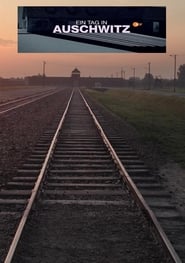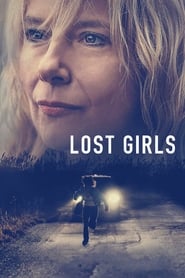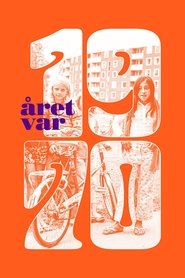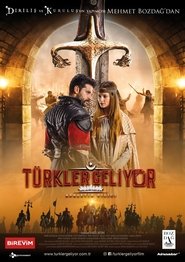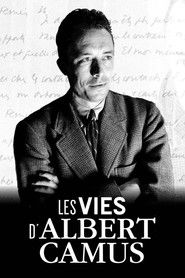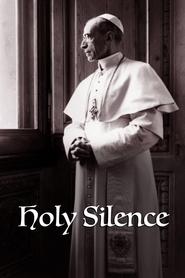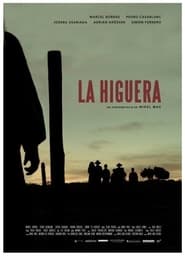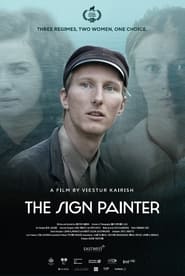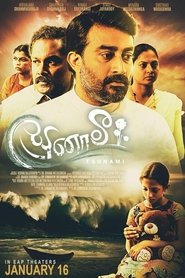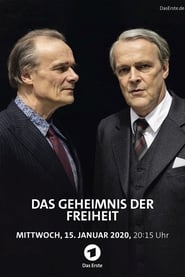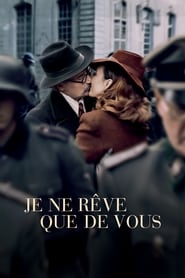New History Movies on Pantaflix - Page 180
-
Wasp Network
2020
Wasp Network
2020
star 6Havana, Cuba, 1990. René González, an airplane pilot, unexpectedly flees the country, leaving behind his wife Olga and his daughter Irma, and begins a new life in Miami, where he becomes a member of an anti-Castro organization. -
Caral: Sacred City of the Andes
2020
star 8The Sacred City of Caral or Caral-Supe is the capital of the Norte Chico Civilization of Supe located in the Supe Valley, 200 km (124 miles) north of Lima. The Sacred City of Caral is the earliest known civilization in the Americas, it dates to the Late Archaic period. Radiocarbon analysis performed by the Caral-Supe Special Archaeological Project (PEACS) dates its development between 3000 to 1800 B.C.. It is believed that this civilization started by the merging of small villages based on trade of agricultural and fishing products. Its importance rests on the success of techniques of domestication of cotton, beans, potatoes, chilis, squash among other products. Success in agriculture was due to the development of water canals, reservoirs and terraces. They used guano, bird excrement, and anchovies as fertilizer. -
Auschwitz - One Day
2020
Auschwitz - One Day
2020
star 6.9Today, the word "Auschwitz" is a synonym for the Holocaust. Thousands of Jews died there every day. With the help of some acted scenes, photos and graphics, the film tells of a day in May 1944. The starting point is a unique document: a photo album created by the SS perpetrators themselves. Almost all of the photos were taken at the end of May 1944, in just a few days. They show the cruel routine, the arrival of the victims, their "selection" on the ramp, the robbery of their property and the transformation of all those who were not immediately killed, into shaved, uniformed slaves. One survivor is Irina Weiss. On a photo she recognizes her little brothers and her mother - waiting unsuspectingly near the crematorium. The SS photographers captured all of this. Their identity is known today: one of them was Bernhard Walter, a "Stabsscharführer" who lived with his wife and three children near the extermination camp. -
Lost Girls
2020
Lost Girls
2020
star 6.1When Mari Gilbert's daughter disappears, police inaction drives her own investigation into the gated Long Island community where Shannan was last seen. Her search brings attention to over a dozen murdered prostitutes. -
Året var 1970
2020
Året var 1970
2020
This is the year with a music party at Gärdet in Stockholm, and Lee Hazlewood and Nina Lizell wonder who can sail before the wind. The Vietnam War continues and the United States is bombing Cambodia. In Stockholm, police officers write in protest against poor conditions and the rockers take the chance to take over the town. During the "cannon race" on the Gellerås track, a fatal accident occurs. Director Roy Andersson's first feature film "En kärlekshistoria" is a must see. -
The Windermere Children
2020
star 7.5The story of the pioneering project to rehabilitate child survivors of the Holocaust on the shores of Lake Windermere. -
The Courier
2020
The Courier
2020
star 7Cold War spy Greville Wynne and his Russian source try to put an end to the Cuban Missile Crisis. -
Breaking The Codes
2020
Breaking The Codes
2020
Using rare archive footage and exclusive interviews, this series takes you to the heart of a war that was fought far from the bombs and shells of any battlefront. A war that involved the brilliant skills of mathematicians and chess players. Revealed here are the remarkable exploits of American and British code-breakers and their immense contribution to victory in during WWII. -
Who Killed The Princes In The Tower?
2020
In 1483, the twelve-year-old King Edward V and his younger brother were put into the Tower of London by their uncle, Richard. Weeks later, Richard pronounced himself King. The boys were never seen again. For centuries it has been assumed that Richard killed his nephews in a craven attempt at glory. But according to some, Richard was no child-killing monster. Rather, he was the finest King England ever had. Others say nobody killed the princes at all, and they lived anonymously into old age, far away from the cut-throat world of the English court. This film seeks the truth behind the mystery of their fate. -
The Turks are Coming: The Sword of Justice
2020
star 4.6The period after the Sultan Mehmed II (the Conqueror) conquered Constantinople, moving towards Europe in the fifteenth century , and Sultan Mehmed's determination to spread Islam in Europe by the superb morals of Muslims then. -
The Lives of Albert Camus
2020
star 8Albert Camus died at 46 years old on January 4, 1960, two years after his Nobel Prize in literature. Author of “L'Etranger”, one of the most widely read novels in the world, philosopher of the absurd and of revolt, resistant, journalist, playwright, Albert Camus had an extraordinary destiny. Child of the poor districts of Algiers, tuberculosis patient, orphan of father, son of an illiterate and deaf mother, he tore himself away from his condition thanks to his teacher. French from Algeria, he never ceased to fight for equality with the Arabs and the Kabyle, while fearing the Independence of the FLN. Founded on restored and colorized archives, and first-hand accounts, this documentary attempts to paint the portrait of Camus as he was. -
Holy Silence
2020
Holy Silence
2020
star 6As World War II looms, Pope Pius XI calls on a humble American priest to help him challenge the evils of Nazism and anti-Semitism. But death intervenes, and Pope Pius XII now carries out a very different response to Hitler and the Holocaust. -
Last Days of Pompeii
2020
-
The Fig Tree
2020
The Fig Tree
2020
Extremadura (Spain), 19th century. Four shepherd agree to let a game of cards decide which one of them will kill the village landowner. -
The Sign Painter
2020
The Sign Painter
2020
star 6.3A Latvian tragicomedy about a young artist who bears witness to the dramatic political upheavals of the WWII era. As brutal regimes come and go, his country, his village, his people, and even his heart are swept up in the inexorable currents of history. -
Tsunami
2020
Tsunami
2020
star 3.8After a catastrophic tsunami in 2004, many lives were changed forever. This movie portrays a heart-warming story of two such families, and the story revolves around a 2-year-old child believed to be washed away by the floods. 10 years later, the Tamil family learns about a 12-year-old Sinhalese girl who can understand Tamil and remembers incidents from her previous life. Soon they recognize the girl by a birthmark on her face. The young girl now has to choose between her biological family and the family she grew up with. -
Felix Austria
2020
Felix Austria
2020
star 7.1The plot revolves around the controversial relationship between maid Stefania Chornenko and blueblood Adelia Anger against the backdrop of the provincial Austro-Hungary in 1900. Both Stefania’s parents and Adelia’s mother died during the fire. Adelia’s father adopted neighbors’ orphan. Girls grew up together to become as close as sisters, though Stefania served as the maid. This attachment develops into love-trap: on one hand full of mutual manipulation and jealousy, but equally based on сare and devotion. The illusion of balance is broken when Adelia marries sculptor Petro. Everything gets even more complicated when Joseph, the old love interest of Stefa, returns to town as the priest and married man. Illusions are destined to evaporate and reality comes into focus. -
The Weight of Steel Title
2020
Who knows Berthold Beitz? Fewer and fewer people. He shaped the history of Germany like no other, be it as the leading industrial manager of Krupp or as the rescuer of numerous Jews during National Socialism. -
An Irrepressible Woman
2020
star 5.31940, Jeanne Reichenbach turns her back on a peaceful life to link her destiny to Léon Blum. She's been loving him since her teenage years, and is ready to sacrifice her freedom to mary him at Buchenwald, where he's held prisoner. They will survive together.
 Netflix
Netflix
 Amazon Prime Video
Amazon Prime Video
 Apple iTunes
Apple iTunes
 Apple TV Plus
Apple TV Plus
 Disney Plus
Disney Plus
 Google Play Movies
Google Play Movies
 Paramount Plus
Paramount Plus
 Hulu
Hulu
 HBO Max
HBO Max
 YouTube
YouTube
 fuboTV
fuboTV
 Peacock
Peacock
 Peacock Premium
Peacock Premium
 Amazon Video
Amazon Video
 The Roku Channel
The Roku Channel
 AMC+
AMC+
 Kocowa
Kocowa
 Hoopla
Hoopla
 The CW
The CW
 Vudu
Vudu
 Starz
Starz
 Showtime
Showtime
 PBS
PBS
 Pantaflix
Pantaflix
 FXNow
FXNow
 Tubi TV
Tubi TV
 Kanopy
Kanopy
 Comedy Central
Comedy Central
 Crunchyroll
Crunchyroll
 Microsoft Store
Microsoft Store
 Redbox
Redbox
 Sun Nxt
Sun Nxt
 ABC
ABC
 DIRECTV
DIRECTV
 Crackle
Crackle
 Fandor
Fandor
 Plex
Plex


